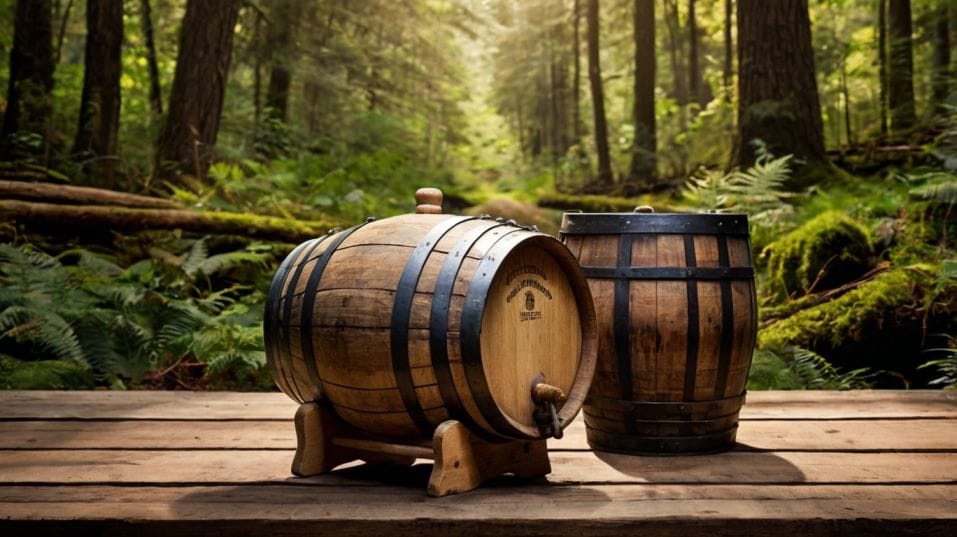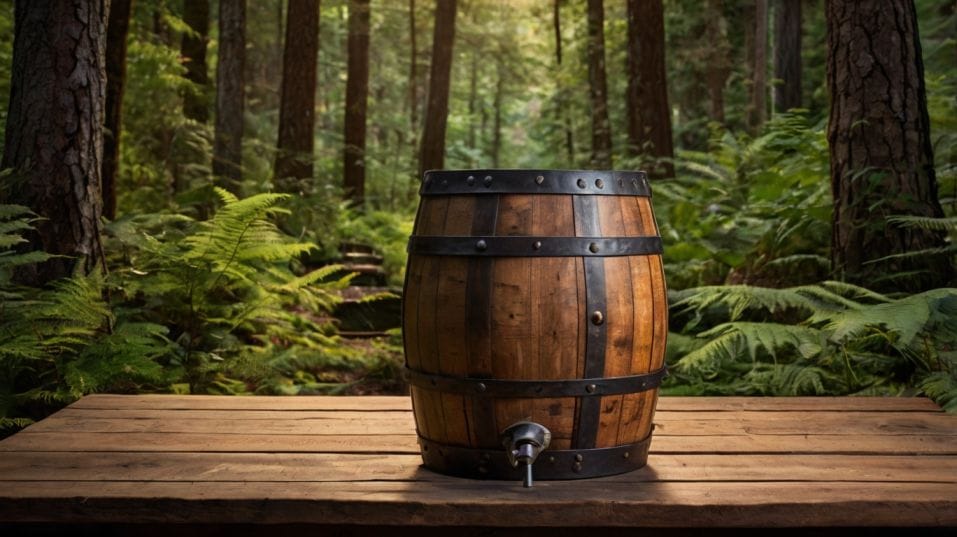Does Barrel Size Affect Flavor? Yes — Here’s How
Curious about how whiskey gets its flavor? Discover how barrel size shapes taste, maturity, and value—and what to look for in your next pour.

What if one overlooked detail could change how whiskey smells, tastes, and evolves in the glass? Barrel size isn’t background noise—it’s a major player.
Whether you're sipping your first serious pour or starting a collection, knowing how barrel size shapes flavor helps you move from casual drinker to confident taster.
Small barrels, big barrels—each leaves a mark. And once you understand that, every bottle starts telling a clearer story.
What Barrel Size Actually Means
Barrel size refers to the internal volume the barrel can hold, typically measured in gallons. Standard bourbon barrels—called “American Standard Barrels” or ASBs—hold about 53 gallons (200 liters).
But producers also use smaller formats like 30-gallon, 15-gallon, even 5-gallon barrels, especially in newer or craft operations.
On paper, this might seem like a logistical choice—how much you can store, how fast you want to age.
In practice, it’s about extraction, oxidation, integration, and ultimately, flavor control. These barrels aren’t interchangeable. They change the rules of engagement between wood and whiskey.

The Surface Area-to-Volume Equation
Here’s the core principle: the smaller the barrel, the greater the surface area in contact with the liquid, relative to volume. Why does that matter?
Because surface contact = flavor impact. Every inch of barrel staves is an opportunity for the spirit to pull flavor compounds from the wood: vanillin, lactones, tannins, spice oils, and sugars from the charred interior.
A 5-gallon barrel offers intense contact. Whiskey in these barrels takes on color, oak character, and spice rapidly—sometimes in a matter of weeks.
Larger barrels move at a slower, more measured pace, allowing flavors to unfold gradually over months or years.
This is why small-barrel whiskey can taste like it’s “aged” faster. But that word—aged—is doing too much work. Speed and quality aren’t the same thing. A whiskey that turns dark quickly isn’t necessarily well-aged. It’s just been heavily extracted.
Extraction Isn’t Everything
Small barrels often give you a hit of upfront flavor—bold oak, big spice, noticeable char. But that doesn’t always translate to balance.
You might get power without depth. Color without complexity. Think: strong entry, but an abrupt or bitter finish.
Why? Because small barrels can’t offer enough oxygen over time to mellow and harmonize all those sharp edges. Whiskey needs oxygen, not just wood.
Oxidation allows harsh alcohols to soften, rough notes to round out, and subtleties to emerge. That kind of transformation takes time and space—both of which small barrels limit.
Large barrels create a slower, more forgiving environment. Less aggressive extraction, more breathing room. That gives the spirit space to evolve naturally.
Over years, it builds nuance: caramel and vanilla woven with dried fruit, toasted grain, floral lift, or herbal undertones. If you’re tasting for elegance, complexity, or length, the advantage often leans toward bigger barrels.
Climate Is the Wildcard
Barrel size never acts alone. Aging conditions—heat, humidity, seasonal swing—have just as much influence.
In hot climates (Texas, Arizona, even parts of Kentucky in the summer), whiskey expands into the wood more forcefully.
In cold weather, it contracts and pulls back. This in-and-out motion is what allows extraction to happen. Smaller barrels in hot climates exaggerate this effect. You get more contact and more movement—faster.
This can be useful if you’re trying to develop flavor on a tight timeline. But it’s also a tightrope. Push too far, and you get over-oaked whiskey with bitter, astringent notes.
In cooler climates or deep rickhouses, small barrels can feel more restrained—but now you’re stuck with their limited oxidation window.
Larger barrels are more stable. They don’t spike as fast or react as hard to environmental swings. That stability helps foster long-term development—flavors that are integrated, not stacked.
If you’re building a serious palate, start connecting the dots: barrel size and climate tell you how that whiskey aged, and whether it did so with finesse.
Maturity vs. Flavor Density
Here’s where many new whiskey drinkers—and even collectors—get tripped up: strong flavor doesn’t mean mature flavor.
A small barrel can make a whiskey loud. More color, more oak, more spice. But maturity? That’s different.
Maturity is when all the elements—wood, spirit, age—feel connected. No jagged edges, no runaway sweetness, no overpowering char. Just cohesion.
Large barrels, with their slower extraction and extended oxidative timeline, tend to deliver this better. They give the spirit time to sort itself out.
You’ll taste this in the layering, the finish, the subtlety between sips. That’s where whiskey stops being just tasty—and starts being worth collecting.
How Distillers Use Barrel Size Strategically
Some distillers are smart about mixing formats. They’ll use small barrels to inject bold flavor into a young spirit, then transfer that whiskey into larger barrels to refine it.
Others will blend whiskey from different barrel sizes to create contrast and complexity. This isn’t about cutting corners—it’s about control.
When you know how to read a bottle or a producer’s method, you start spotting who’s chasing flavor versus who’s chasing shortcuts.
Is the “craft” whiskey in front of you all from 10-gallon barrels? You might get a fun, punchy pour—but it won’t drink like something with age and structure.
Is that small distiller using a hybrid system—finishing in large barrels or marrying batches across sizes? That’s someone trying to build flavor, not just rush it.
What This Means for You
If you’re tasting seriously or building a collection, this isn’t trivia. Barrel size tells you how to approach a bottle—what to expect in the glass, what to question, and how to evaluate value.
- If the whiskey is young but tastes over-oaked, consider whether small barrels are masking flaws.
- If a bottle has modest proof but long, complex flavor, large-barrel aging may be at work.
- If a distillery plays with multiple barrel sizes, pay attention to their blending approach—it might be the key to their best releases.
You don’t need a lab coat. Just awareness. Use what you taste to reverse-engineer what’s happening inside that barrel—and what the producer is trying to achieve.
Final Thoughts
Barrel size isn’t a minor detail. It’s one of the core levers that distillers pull to shape the whiskey you taste.
Smaller barrels bring intensity and speed; larger barrels offer grace and depth. Both have their place—but only when used with intention.
Next time you pour, pause. Think about the barrel that shaped what’s in your glass. Then taste with curiosity.
Try comparing two pours aged in barrels of different sizes. Learn what oak really gives—and when it gives too much. This is how you move from drinking labels to understanding flavor. Want to build a better palate? Don’t chase hype.
Chase knowledge. Barrel size is a great place to start—because once you understand the wood, you start seeing everything else more clearly. So pour something smart. Taste slowly. Build your edge—one barrel at a time.




